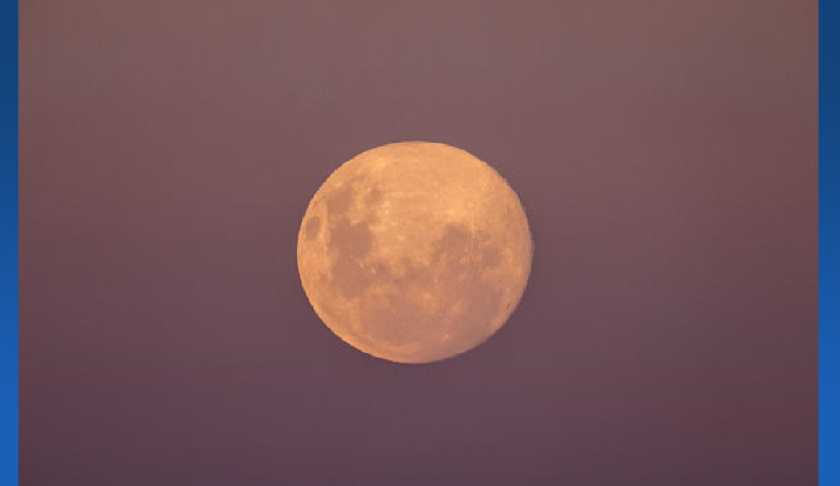
Heavy traffic continues on Fort Myers Beach
With constant heavy traffic on the roads, there has been significant foot traffic. This traffic also means people have to navigate around ongoing construction.

A bright, full moon will rise to illuminate the night sky Monday, and it’s not just any full moon — April marks the return of the “pink” supermoon.
Supermoons are full moons that appear larger and more luminous in the sky because they are in perigee — a bit closer to Earth than usual. This typically happens a few times each year.
“Different publications use slightly different thresholds for deciding which full moons qualify as supermoons, but for 2021 all agree the two full moons in April and May are supermoons,” NASA’s Gordon Johnston said in a statement.
The moon will be visible after sunset and reach its fullest point at 11:32 p.m. ET on April 26, NASA says. It will continue to appear full until about Wednesday morning.
It’s called the pink moon — but it’s not actually pink.
“Before you get your hopes up, this ‘Super Pink Moon’ won’t actually look ‘super pink’—or any hue of pink, really,” the Farmer’s Almanac states. “The Moon will be its usual golden color near the horizon and fade to a bright white as it glides overhead.”
According to the Farmer’s Almanac, April’s full moon is called a Pink Moon after the herb “moss pink,” Phlox subulata. Native to the Eastern U.S., the plant is one of the earliest and most widespread spring flowers.
This moon has also been referred to as the Sprouting Grass Moon, the Egg Moon, the Fish Moon and the Paschal Moon, NASA said. For Hindus, it corresponds with the festival Hanuman Jayanti, which celebrates the birth of the god Hanuman, and for Buddhists, it corresponds with Bak Poya.
April’s full moon is one of at least two supermoons occurring in 2021, with the second, known as the “Flower Moon,”on May 26. Some publications argue there are actually four supermoons this year.
“These two full Moons are virtually tied, with the full Moon on May 26, 2021, slightly closer to the Earth than the full Moon on April 26, 2021, but only by about 98 miles, or about 0.04% of the distance from the Earth to the Moon at perigee,” Johnston said.
And the full moons aren’t the only exciting sky-watching opportunities this spring. The annual Eta-Aquariid meteor shower peaks the morning of May 6.